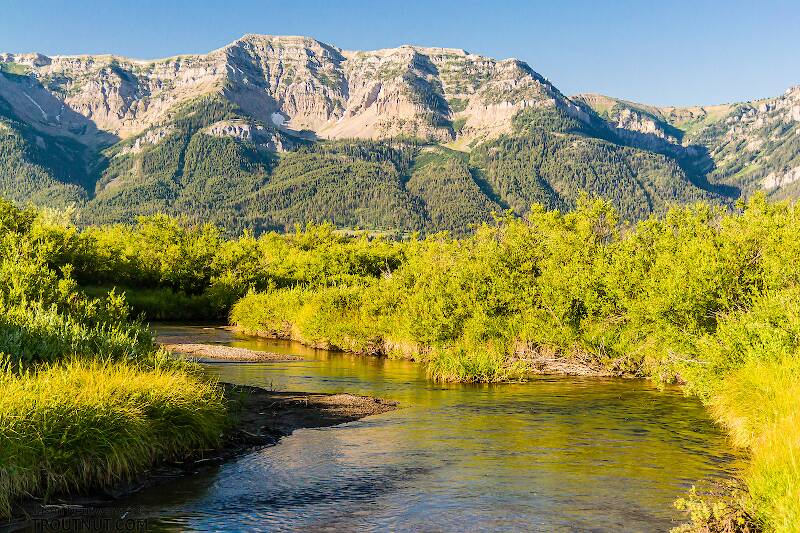
Hex Mayflies
Hexagenia limbata
The famous nocturnal Hex hatch of the Midwest (and a few other lucky locations) stirs to the surface mythically large brown trout that only touch streamers for the rest of the year.

Mayfly Species Isonychia campestris (Slate Drakes)
Where & when
Time of year : September and October
In 4 records from GBIF, adults of this species have been collected during July (50%) and August (50%).
Species Range
Physical description
Most physical descriptions on Troutnut are direct or slightly edited quotes from the original scientific sources describing or updating the species, although there may be errors in copying them to this website. Such descriptions aren't always definitive, because species often turn out to be more variable than the original describers observed. In some cases, only a single specimen was described! However, they are useful starting points.
Male Spinner
Wing length: 9-11? mm
Somewhat paler than Isonychia sicca; venation dark.
Head of female pale yellowish, with traces, more or less distinct, of brown submedian stripes on the vertex and occiput. Blackish brown spot between eye and lateral ocellus, but no dark mark in corners of occiput. Thorax of male light brown, shaded somewhat with reddish and blackish brown on the scutellum. Fore leg entirely reddish black, tarsi somewhat paler. Middle and hind legs dull yellow, with slight red shading on the femora. Wings with fine veins, all dark-tinged.
Abdomen dorsally dull brown tinged with red, shaded laterally with deeper brown in the form of poorly defined dark patches; lateral margin pale brown. Light brown ventrally, rather paler than the dorsum. Penes similar in form to those of sicca.
Female Spinner
Head of female pale yellowish, with traces, more or less distinct, of brown submedian stripes on the vertex and occiput. Subanal plate of female rather deeply excavated apically, its outer angles acute.
Start a Discussion of Isonychia campestris
References
- Caucci, Al and Nastasi, Bob. 2004. Hatches II. The Lyons Press.
- Knopp, Malcolm and Robert Cormier. 1997. Mayflies: An Angler's Study of Trout Water Ephemeroptera . The Lyons Press.
- Needham, James G., Jay R. Traver, and Yin-Chi Hsu. 1935. The Biology of Mayflies. Comstock Publishing Company, Inc.
Mayfly Species Isonychia campestris (Slate Drakes)
Species Range
Common Names
Resources
- NatureServe
- Integrated Taxonomic Information System
- Global Biodiversity Information Facility
- Described by McDunnough (1931)


